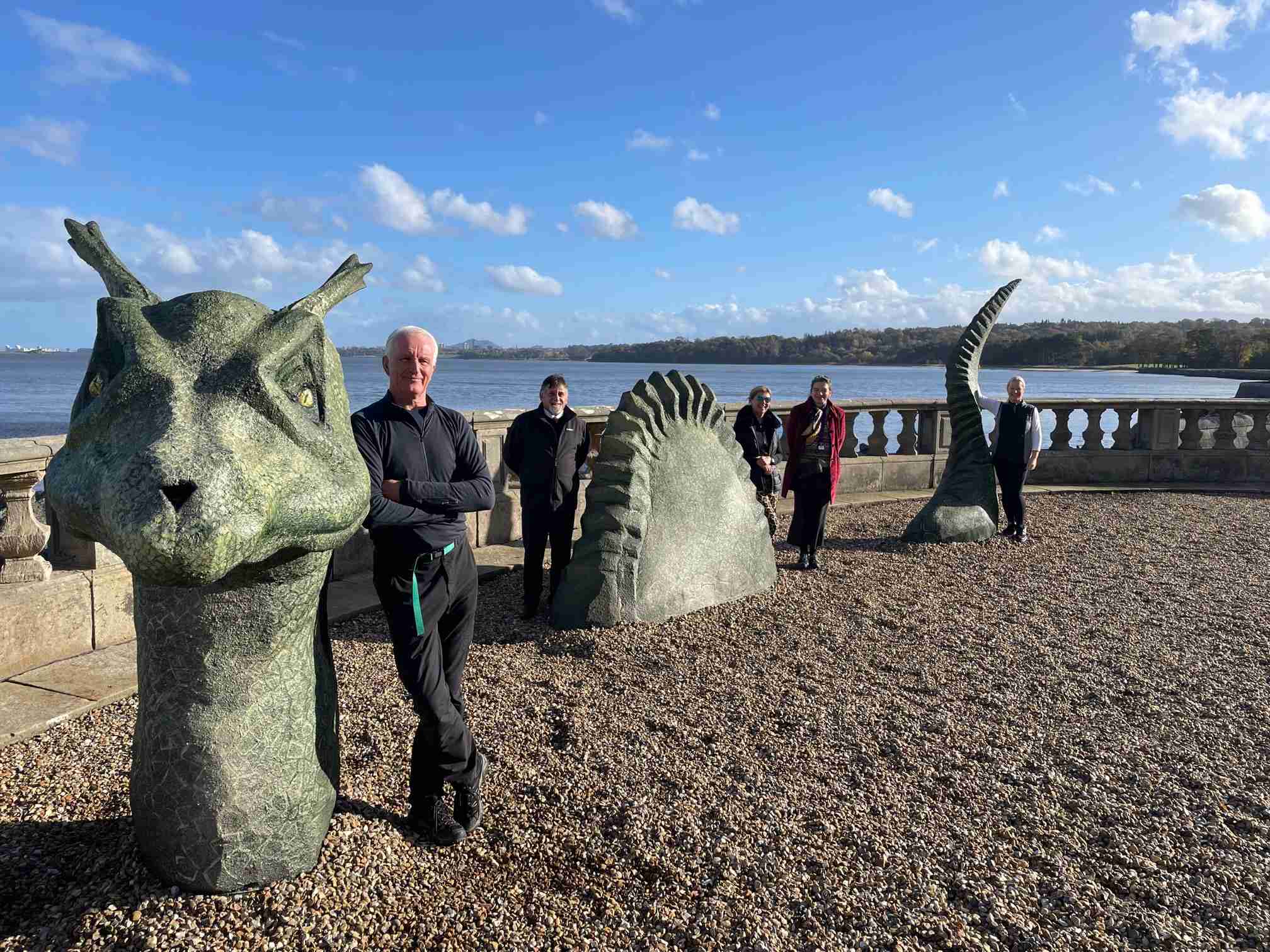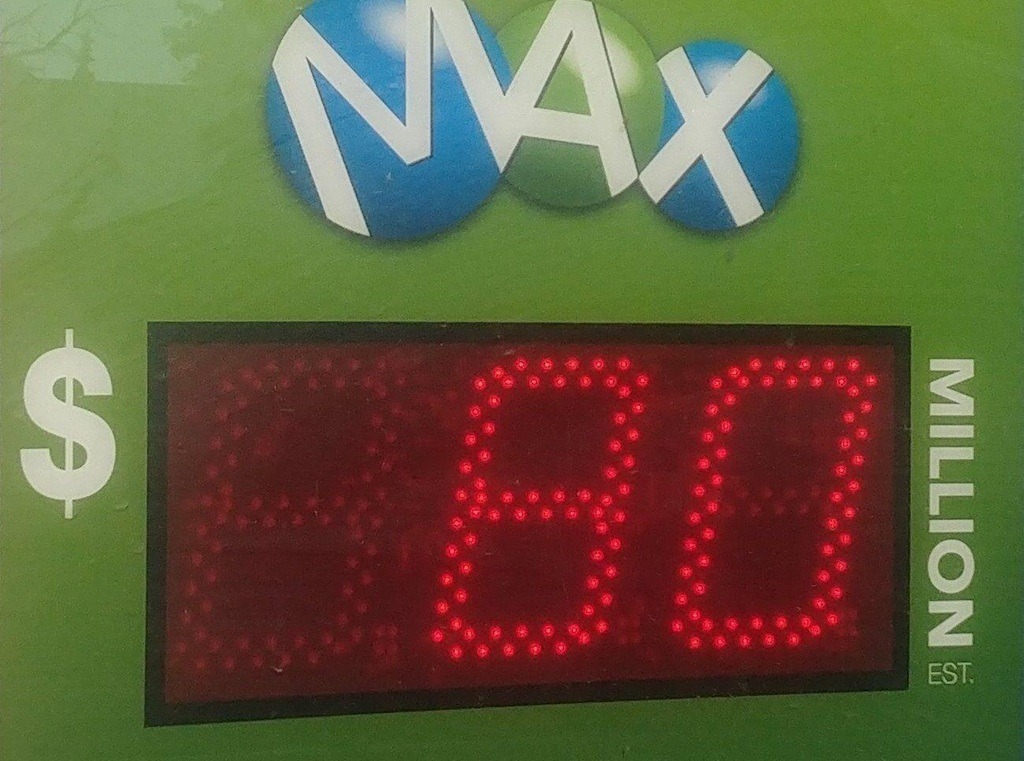News
Largest Search for Loch Ness Monster in 5 Decades Begins

On Saturday, academics and enthusiasts from all over the world descended upon the Scottish Highlands to begin the largest search for the Loch Ness Monster in half a century.
To try and solve a question that has fascinated people for decades, the expedition sent out drones equipped with thermal imaging cameras, boats with infrared cameras, and a hydrophone to explore the depths of the ocean.
Paul Nixon, general manager of the Loch Ness Centre, told reporters, “There isn’t a corner of the globe you can go to where people haven’t heard of Nessie, but it is still one of our biggest questions — what is the Loch Ness Monster.”
I can’t put my finger on it. That there is a large object in Loch Ness is all I know. I’ve seen sonar scans of moving underwater objects the size of transit trucks.
Tatiana Yeboah, a 21-year-old French tourist who happened to be in Loch Ness at the same time as the hunt, said it had always been a goal of hers to see the lake.
To paraphrase Yeboah, “it could be myth, it could be real — I like to believe it is something halfway between,” Yeboah promised she wouldn’t let anything slip by while she was there by promising to keep a close eye on the lake.
The thermal scanners are a potentially game-changing tool, according to the search teams, who are hoping to spot any weird anomalies down there. Using the hydrophone, the team can listen for any strange noises that might be Nessie.
The freshwater loch is the largest lake in the United Kingdom, measuring 36 km in length and reaching a maximum depth of 240 metres.
Stone sculptures in the vicinity depict a mystery beast with flippers, suggesting that stories of a monster lurking in Loch Ness go back millennia.
The first written mention of the beast was in a biography of the Irish monk Saint Columba, written in the year 565 A.D.
Columba supposedly ordered the monster to retreat after it had assaulted a swimmer and was going to strike again.
In May of 1933, a couple driving along a brand-new lochside road reported seeing “a tremendous upheaval” in the water, according to the Inverness Courier.
The Loch Ness Centre in Drumnadrochit, close to Inverness, reports that there have been over 1,100 confirmed sightings of Nessie. Every year, the monster generates millions of pounds in tourist for Scotland.
Both professionals and amateurs have scoured the loch’s depths for years in search of the massive fish, hoping to catch a glimpse of the legendary sturgeon.
Some have hypothesised that the creature is actually a long-extinct marine reptile, perhaps even a plesiosaur. The Loch Ness Investigation Bureau conducted the largest search to that point in 1972, but found nothing.
Operation Deepscan sent sonar equipment over the loch’s width in 1987, claiming to have spotted a “unidentified object of unusual size and strength.”
In 2018, scientists conducted a DNA study of Loch Ness to learn more about the aquatic life there. Results suggested the presence of countless eels, but no huge animals such as plesiosaurs were present.
Nixon elaborated, “The weekend affords an opportunity to search the waters in a manner never before undertaken, and we can’t wait to see what we find.”
Loch Ness Monster dates back to around 565 AD
The Loch Ness Monster, often referred to as “Nessie,” is a legendary creature said to inhabit Loch Ness, a large freshwater lake in the Scottish Highlands. The creature is often described as a large aquatic creature with a long neck and humps that emerge from the water. Reports of Nessie date back centuries, but the legend gained significant attention and popularity in the 20th century.
The first recorded sighting of the Loch Ness Monster dates back to around 565 AD, when Irish missionary St. Columba is said to have encountered a creature in the waters of the loch. However, the modern legend of Nessie gained widespread attention in the 1930s when a series of alleged photographs and eyewitness accounts began to circulate.
The most famous photograph of Nessie, known as the “Surgeon’s Photograph,” was taken in 1934 by Robert Kenneth Wilson. It depicts a long-necked creature rising out of the water. This photograph fueled further interest and speculation about the existence of the Loch Ness Monster.
Over the years, there have been numerous reported sightings, photographs, and even sonar readings that enthusiasts claim provide evidence for the existence of a large unknown creature in Loch Ness. However, most of these pieces of evidence have been controversial and often subject to skepticism and scientific investigation.
Scientists and researchers have conducted various expeditions and studies to search for evidence of the Loch Ness Monster. These efforts have often involved the use of sonar technology, underwater cameras, and other advanced equipment. Despite these efforts, no definitive proof of Nessie’s existence has been found, and many of the sightings and photographs have been debunked as hoaxes or misidentifications of natural phenomena.
The Loch Ness Monster remains a popular and enduring legend, attracting tourists, researchers, and curious individuals from around the world. While there is no scientific evidence to support the existence of a large unidentified creature in Loch Ness, the legend continues to capture the imagination of people interested in mysteries and the unknown.
Keywords: loch ness monster video, loch ness monster story
News
Trudeau Rocks to Taylor Swift While Montreal Burns

Prime Minister Justin Trudeau has come under fire yet again after a video surfaced on X, showing him dancing at a Taylor Swift performance while anti-Nato protestors ransacked downtown Montreal.
Trudeau attended Taylor Swift’s concert in Toronto on Friday night. Before Taylor Swift approached the stage, X shared a viral video of him dancing and singing along to the song “You Don’t Own Me.”
The image of Trudeau dancing amid violent protests in Montreal generated widespread indignation online. Some social media users even compared Trudeau to the ancient Roman dictator Nero, known for “fiddling while Rome burned.”
Don Stewart, a Member of Parliament (MP) representing part of Toronto, called out the prime minister in a post on X.
Lawless protestors run roughshod over Montreal in violent protest.
The Prime Minister dances.
This is the Canada built by the Liberal government.
Bring back law and order, safe streets and communities in the Canada we once knew and loved. pic.twitter.com/PVJvR6gtmf
— Don Stewart (@donstewartmp) November 23, 2024
“Lawless protesters run roughshod over Montreal in violent protest. The Prime Minister dances,” Stewart wrote. “This is the Canada built by the Liberal government.”
“Bring back law and order, safe streets and communities in the Canada we once knew and loved,” the MP added.
On Saturday, the day after Taylor Swift’s concert, Trudeau condemned the anti-NATO protests, calling them “appalling.”
Anti-NATO activists set off smoke bombs and marched through Montreal’s streets waving Palestinian flags. According to the Montreal Gazette, rioters set fire to automobiles and battled with police.
Pro-Palestinian protests
Protesters also tossed tiny explosives and metal objects at officers. At one point, the mob torched an effigy of Israeli Prime Minister Benjamin Netanyahu. Police used tear gas and batons to disperse the gathering, and three persons were arrested for attacking officers and impeding police operations.
Masked protesters were seen burning flares and bashing storefront windows in videos and photographs shared on social media. Pro-Palestinian protests have been taking place across Canada since the Israel-Gaza conflict began late last year.
Critics have lambasted Trudeau for doing nothing to stop the violent pro-Palestinian marches, with some claiming he has fueled anti-Israel sentiment in Canada.
On Friday, Trudeau stated that Canada would respect the orders of the International Criminal Court (ICC), which issued an arrest warrant for Mr Netanyahu, even if it meant arresting the Israeli prime leader on Canadian soil.
Related News:
Trudeau Called the Greatest Threat to NATO
News
Calgary Zoo Admits Human Error in Death of Baby Gorilla

The Calgary Zoo has admitted in a public statement that a zookeeper’s negligence caused the death of a 2-year-old baby gorilla. Eyare, a newborn gorilla, died last week after being slammed in the head by a hydraulic door.
The accident occurred when a zoo worker attempted to separate Eyare from the rest of the gorilla tribe for a solitary training session.
The gorilla died from significant head injuries, according to the zoo’s statement.
“This tragedy has struck us all in the deepest way imaginable,” Colleen Baird, director of animal care at the Calgary Zoo, said during a news conference. “Eyare’s brief but meaningful existence gave so much joy to our community, and all will sorely miss her. We will do everything possible to prevent repeat accidents.”
According to Baird, the staff member involved was immediately removed from the workplace and will be reassigned to another area of the zoo. The Calgary Zoo stated that it would take preventive steps, such as specialist personnel training and animal behavioral training, to avoid a similar incident.
Calgary Zoo Questioned
It is not the first time an animal at the zoo has died from negligence at the Calgary Zoo. A capybara was accidentally crushed by a hydraulic door similar to the one that killed Eyare in 2019.
An otter died in 2016 after being entangled in an “unauthorized” pair of jeans that a zookeeper had dropped in its enclosure. In 2013, a penguin died in “a freak accident” after swallowing a stick.
Animal Justice, a Canadian group that promotes animal welfare, has called for an independent investigation of animal safety and oversight at the Alberta facility.
“The Calgary Zoo appears to have a higher rate of animal deaths compared to other zoos, and in light of Eyare’s death there should be a systematic review of the zoo’s operations and practices, conducted transparently by the government or another outside party,” according to Camille Labchuk, the executive director of Animal Justice.
The Calgary Zoo refuted that it has more animal deaths than other zoos, emphasizing that it adheres to operating requirements and has maintained accreditation by the Association of Zoos and Aquariums’ independent Accreditation Commission since 1978.
“We love and care for more than 4,000 animals representing over 100 species that call our zoo home,” stated a Calgary Zoo representative.
“Human error-related deaths in animals are quite infrequent. We have lost two animals in the last ten years: a North American river otter in 2016 and ‘Eyare’ this week.
While rare, even one human-caused death is too many. These unfortunate instances have served as vital learning experiences, prompting us to examine and tighten protocols to provide the greatest level of care.”
Baird said at the news conference that using hydraulic doors is “common practice with accredited zoos,” adding that the facility will consider switching to alternate doors to improve safety.
The Calgary Zoo, which established the Wilder Institute in 2021, caters to nearly 4,000 creatures, including six more western lowland gorillas.
Related News:
Beluga Whales Dies at Canada’s Marineland
Outrage Erupts After 17th Beluga Whale Dies at Canada’s Marineland
News
Canada’s Lotto Max Jackpot Climbs to $80M

Lotto Max in Canada has reached $80 million for only the second time in Canadian lottery history. Friday’s draw sought a winner for a $75 million pool, but the top reward remained unclaimed as of Saturday, increasing the jackpot.
Only once did the jackpot reach $80 million in September, when it broke the previous record. Before that, the prize was $75 million, a record.
The Lotto Max prize maximum was boosted earlier this year, enabling for jackpots of more than $70 million. The cap is now at $80 million.
While a greater fee may encourage more people to play, the odds of winning the lottery remain extremely low.
According to the Ontario Lottery and Gaming Corporation, the odds for a $5 ticket are around one in 33,294,800.
While there was no jackpot winner in Friday’s draw, someone did match six of the seven winning numbers, plus a bonus, earning them a payout of more than $320,000.
Lotto Max History
Lotto Max is one of three national lottery games in Canada, overseen by the Interprovincial Lottery Corporation. The game was introduced on September 19, 2009, and its inaugural draw occurred on September 25, 2009. It replaced Lotto Super 7.
The odds of winning the Lotto Max are 1 in 33,294,800. This is correct to a point but misleading.
Let’s have a look at the rules:
- Players choose 7 numbers out of 50
- Numbers cannot be repeated
- Numbers are automatically sorted into ascending order
- Each play buys 3 lines
- Each play costs $5
Seeing that players choose 7 out of 50 non-repeating numbers, the equation for the total number of possible combinations (this is different from permutations where the order in which the numbers appear is significant) when playing the Lotto Max is 50! / (7! x 43!)
-
Politics2 weeks ago
Trudeau Orders Facebook to Block Australian Presser Video
-
Business4 weeks ago
Canada CBC News CEO Catherine Tait Recalled to Parliamentary Committee
-
Celebrity4 weeks ago
Shaun White’s Proposal To Nina Dobrev Was Romantic Gold
-
Tech4 weeks ago
Apple Launches The IPhone Into The AI Era With Free Software Update
-
News3 weeks ago
Pro-Khalistanis Sikhs Attack Hindu Temple in Brampton
-
Food4 weeks ago
Starbucks Is Making A Popular Add-On Free Of Charge
























